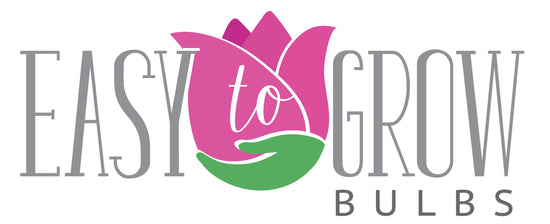The Pros & Cons Of Flowering Bulbs & Plants

If you’re new to bulb gardening and are wondering why you might start adding bulbs to your existing garden, we’ll always tell it like it is. There are pros and cons to every type of plant, including bulbs. That being said, let’s take a look at the ups and downs of both flowering bulbs and other types of non-bulb flowering perennials so you can make the best choice for you!
Note: Although there are tons on non-flowering bulbs and plants, in this blog post we’re zooming in on the flowering types of each.
FLOWERING BULBS
Pros:
- Flower colors and shapes are extraordinary and dramatic
- They store energy from one season to the next, making them more self-sufficient
- Bulbs typically produce a bounty of blooms
- Can be used as cut flowers and in flower arrangements
- They are easy to grow
- They are usually dependable bloomers
- Some can be very long-lived and even naturalize
- Many spring-flowering bulbs attract pollinators
- They are easily grown in the ground, in containers, and in window boxes
- Some can be short-lived
- Not every bulb grows everywhere – some need winter chill in order to bloom in the spring
- Some critters (voles, moles, rabbits, squirrels) love digging bulbs up and eating them
- Their foliage after blooming can be unattractive
- Some can be expensive
- You may need to order what you want if it’s not available at your local garden center (but hey, that’s what we’re here for!)
Bottom Line: Their upfront cost can initially be considered a “con,” but with many bulbs multiplying and growing offshoots, the cost is well worth it overall. And while there is less instant gratification with bulbs, their dramatic beauty, ease of care, and typical long life sets them apart from other types of flowering plants.
NON-BULB FLOWERING PERENNIALS
In this category, we’re talking about flowering perennials — those plants that return and flower every year as opposed to annuals that complete their lifespan in one growing season. We love annuals, too, but they have their own unique set of pros and cons, don’t they?
Pros:
- They are easy to plant and grow
- They are available in many shapes, sizes, and colors
- Many are attractive to pollinators
- They are affordable
- Their foliage often remains attractive with or without blooms
- Most are readily available
- Most are easily grown from seed
- Critters generally leave perennials alone (but not always!)
- They can be pickier about soil and location
- They can be easily impacted by weather and temperature
- Some are shorter-lived
- They are not as dramatic as flowering bulbs
- Some don't grow as well in containers
- Perennials need to be fertilized and fed more than bulbs
Bottom Line: Flowering perennials are the workhorses of the garden, providing a relatively inexpensive way to add tons of form and color. While not as flashy as flowering bulbs, perennials are beautiful and dependable options for both beginning and experienced gardeners.
Our recommendation: Start by creating structure with trees, shrubs, and evergreens. Then add sweeps of flowering perennials that bloom at different times of the year, and fill in with groupings of exuberantly flowering bulbs for massive impact. This is by far the best way to develop a garden that offers a year-round WOW factor — and you can build on it every year!
- Jenny Peterson
